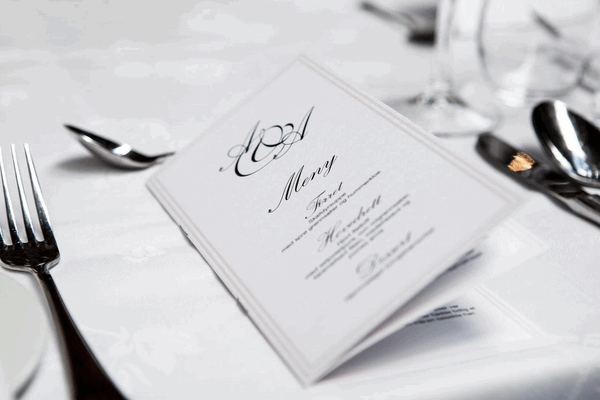It’s never too late to rethink how you write restaurant menu descriptions for your restaurant business. According to published data, 90% of people research restaurants online before visiting them, with 77% trusting customer reviews more than professional critic reviews.

The way you describe dishes on your menu can either attract people to your establishment or cause them to look for a more appealing restaurant. Thanks to the internet, this can also improve your SEO ranking and lead to more people visiting or ordering from your restaurant. With that said, let’s talk about how you can write perfect restaurant menu descriptions in 2021 and attract more guests to your establishment.
- Activate the Readers’ Taste Buds with Texture and Taste Description
Whether you are running a Mexican, Italian, or Asian restaurant doesn’t matter when it comes to restaurant menu writing – the same rules apply. First, each dish on your menu should be described as vividly and tastily as possible to encourage guests to order.
Beyond standardized menu terms, you should also describe each dish’s taste and its texture in creative ways. Relate to Power Thesaurus to find the right words to describe your specific types of foods. This will make the readers’ mouths water and lead to much better sales for your dishes going forward.
- Annunciate Each Special Ingredient in the Dish
Special ingredients are a great selling point for restaurant menus despite them being “ordinary” in other circumstances. You can add a bit of extra specialty to each dish on your menu by annunciating unique ingredients used in the dish’s preparation.
Things like balsamic vinegar, mint, lime, or rose petals work amazingly well to enrich even the most modest menus. Look for specialty ingredients that you can afford to use and write them into your restaurant menu description for some extra word flavor.
- Write a Short Story of the Dish’s Origin
Once your guests arrive at the establishment and are drinking their starters, they will take their time to read your menu. Creating a paragraph-long origin story for each dish on the menu is a neat idea which many guests will appreciate.
Even if your establishment is solely focused on pizzas or burgers, each of those can have a background story to make the menu more playful. You can order calculation problems solving once you come to the point of writing and formatting each dish’s price point in the menu descriptions. You must make your dishes as exclusive and unique as possible to not only retain customers but justify your price points.
- Attach a Location to the Dish or its Ingredients
Similar to the dish’s backstory, each item on your menu can also have a location attached to it to spice things up. For example, you can write down the origin of each spice or type of cheese or meat you used in the dish.
Guests love seeing that the ingredients of what they are about to order came from cities or countries around the world. You should be truthful about this, as it can be seen as immoral to fake which cities or countries the ingredients came from.
- Supplement Each Item Description with a Visual
While not entirely related to “writing”, each dish can be accompanied by a photograph or an illustration. Using original photos to showcase how the meal looks like can be an amazing incentive for people to order. Likewise, original illustrations can make your restaurant menu unique and different from others in your niche.
Any visuals you use in the restaurant menu descriptions need to be original to avoid copyright issues, however. Create these visuals in-house or hire a photographer or a designer to come up with the most complementary visuals for each dish based on descriptions.
- Dedicate a Page to Your Restaurant’s Story
Once you’ve written good descriptions for each dish, you should also take some time to talk about your restaurant. Guests who have ordered dishes and are waiting for them may be inclined to learn more about the establishment.
Help them by writing 1-3 paragraphs of text about how long you’ve been in business, who is running it, and what your goals are. Writing about your restaurant on the menu will help guests identify with you beyond the food itself and cause them to come back more often.
- Avoid Common Restaurant Menu Writing Mistakes
Making sure that you avoid simple mistakes when writing your restaurant menu is just as important as following the other tips we’ve discussed. The following errors can take away from the quality of your restaurant’s menu and should be fixed as soon as possible.
- Avoid Using Niche or Complex Words
You want your restaurant menu descriptions to be unique, but not that unique. Using very complex words to explain simple terminology and ingredients in your menu won’t go over well with guests. “Chicken” is “chicken”, so make sure that you don’t go too far in overexplaining or using niche words for the sake of coming off “exclusive”.
- Only Write About Positive Aspects of Each Dish
We all love to eat burritos, cheeseburgers, and bacon – however, there are some negative health aspects to each dish. These should not find their way into your menu in the slightest, however. You want to sell as many dishes as possible to as many guests – be positive and in support of each item on your restaurant menu.
- Don’t Write Too Much About Each Dish
Guests will spend very little time reading about each dish before looking at other items on your menu. Writing a lot of text about each item will not only be seen as dull but also sometimes result in guests simply giving up. Limit yourself to 1-2 sentences apart from the ingredients list to strike a good balance of professional and informative.
Ask Guests for Feedback on your Restaurant Menu Descriptions (Conclusion)
When all is said and done, all that’s left is for you to ask each guest what they think of your new restaurant menus. While you won’t receive objective and useful feedback from each person, it’s still worth it to ask them. They will appreciate your curiosity about their opinion and be even more inclined to visit your restaurant again. Always leave room for restaurant menu descriptions improvement, and don’t settle for “okay” – you can always do better.
Image source: https://www.pexels.com/photo/close-up-of-menu-313700/
Author’s bio. Jessica Fender is a copywriter and blogger with a background in marketing and sales. She enjoys sharing her experience with like-minded professionals who aim to provide customers with high-quality services.






